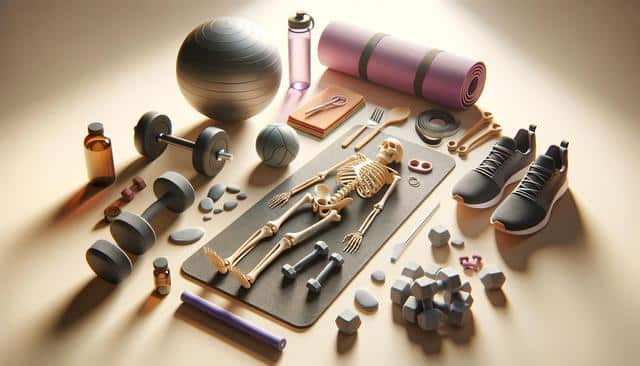
Strengthen Your Bones Through Movement: Exercises That Support Bone Health
Why Bone Health Matters and How Exercise Plays a Role
Bone health is a key component of overall physical well-being, especially as we age. Our bones are living tissues that respond to physical activity by becoming stronger. When bones are stressed through exercise, they adapt by increasing in density and strength. This is particularly important in preventing conditions such as osteoporosis or age-related bone loss. Regular exercise not only improves bone structure but also enhances coordination and balance, reducing the risk of falls and fractures. Movement that stimulates bone growth often involves impact or resistance, which encourages the body to build and maintain bone mass.
Research consistently shows that weight-bearing and resistance-based activities are among the most beneficial for bone strength. These exercises place direct stress on bones, prompting them to grow stronger over time. Incorporating these movements into your routine is a proactive step toward long-term skeletal health.
Weight-Bearing Exercises: Supporting Bone Density
Weight-bearing activities are those that require you to move against gravity while on your feet. These exercises stimulate the bones in the legs, hips, and lower spine, areas most vulnerable to bone loss. Regular practice of these movements can help maintain or increase bone density. Some common weight-bearing activities include:
- Walking at a brisk pace
- Hiking on uneven terrain
- Dancing, including styles like Zumba and ballet
- Climbing stairs or doing step-ups
- Jumping rope or doing jumping jacks
These workouts are accessible and can be adapted to various fitness levels. For example, someone just starting out may choose a daily walking routine, while others might add short bursts of jumping or stair climbing. The key is consistency and progression, gradually increasing the intensity or duration over time to continue challenging the bones.
Resistance Training: Building Strength and Bone Mass
Resistance training, or strength training, involves using weights or one’s own body weight to create muscle tension. This tension also benefits bones by encouraging them to strengthen in response. When muscles pull on bones during movement, it signals the body to reinforce bone tissue. Effective resistance exercises include:
- Squats and lunges using body weight or added weights
- Push-ups and planks to target upper-body bones
- Resistance band workouts, great for joint-friendly strength building
- Weight machines or free weights for controlled motion and stability
These exercises are especially useful in preserving bone mass in the spine, hips, and wrists. For individuals new to resistance training, starting with body-weight movements or light weights is advisable. Gradually increasing resistance ensures continued improvement without overstraining the body.
Balance and Flexibility Work: Preventing Falls and Injury
While bone density is crucial, maintaining balance and flexibility is equally important for preventing fractures. Falls are a leading cause of bone injuries, particularly in older adults. Exercises that enhance coordination and stability can reduce the likelihood of falling and allow for more confident movement. Some helpful options include:
- Yoga poses that build strength and flexibility
- Tai Chi, known for its gentle, flowing movements
- Standing leg lifts or heel-to-toe walking
- Core exercises like bird-dogs or bridges
These practices not only improve physical balance but also enhance body awareness and posture. Regularly including balance and flexibility training in your routine helps create a well-rounded approach to bone health and mobility. It’s also beneficial for people of all ages, not just those in older age groups.
Everyday Activities That Contribute to Bone Health
Beyond structured workouts, everyday movements can also play a role in maintaining strong bones. Simple actions such as carrying groceries, gardening, or taking the stairs instead of the elevator offer natural opportunities to engage muscles and bones. These daily activities might not feel like exercise, but they still contribute to overall bone strength and physical well-being.
To make the most of your day-to-day routine, try incorporating small habits such as:
- Standing up and stretching every 30 minutes if you sit for long periods
- Doing calf raises or squats while brushing your teeth
- Walking or biking to nearby destinations instead of driving
These actions, though modest, can have lasting effects when done consistently. Integrating movement into daily life helps reinforce the habits that keep bones resilient and functional over time.
Conclusion: Staying Active for Lifelong Bone Support
Maintaining bone health is not just about avoiding injury—it’s about enabling a higher quality of life, mobility, and independence. Through a combination of weight-bearing, resistance, balance, and everyday movement, individuals can actively support their bone strength at any age. Whether you’re starting a new fitness journey or looking to add more variety to your current routine, focusing on bone-supportive exercise is a smart and empowering choice. Remember, it’s the regular, intentional movements—big or small—that make a lasting difference in your skeletal health. Stay consistent, listen to your body, and enjoy the benefits of strong, dependable bones.


